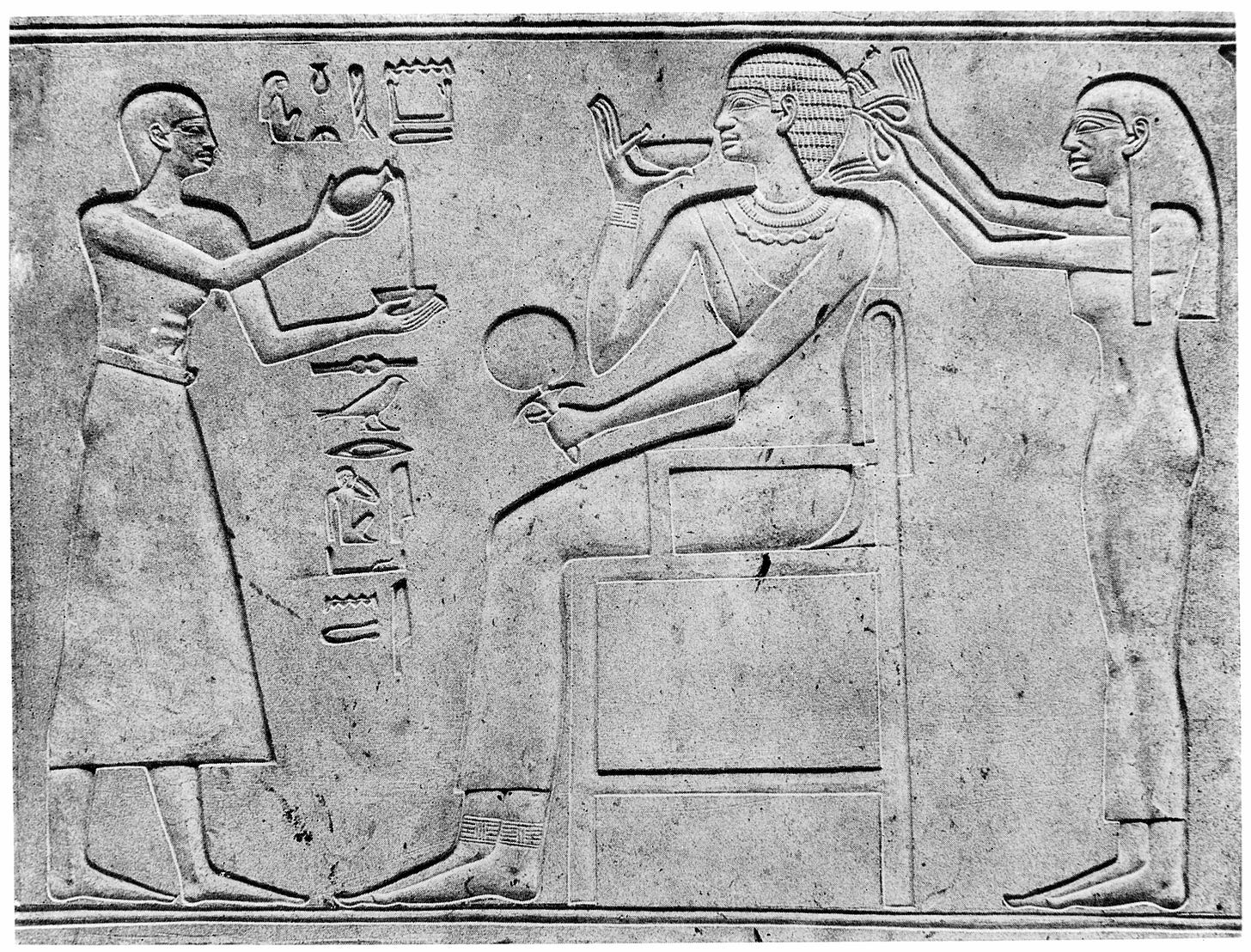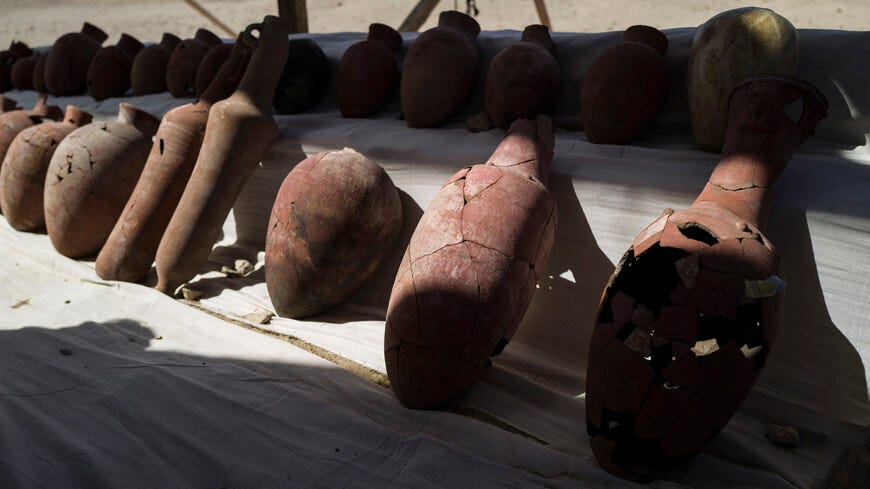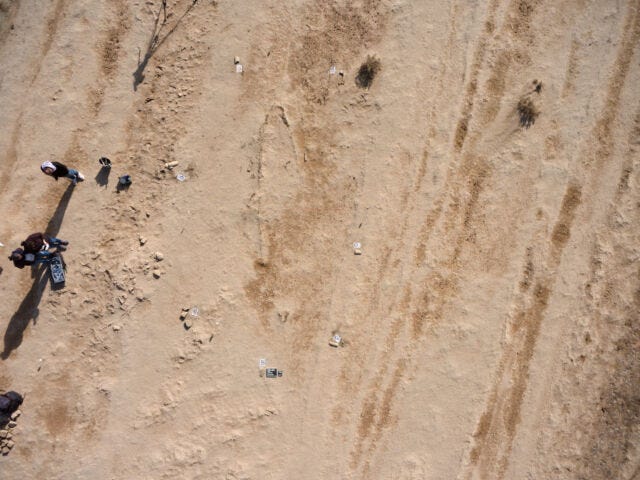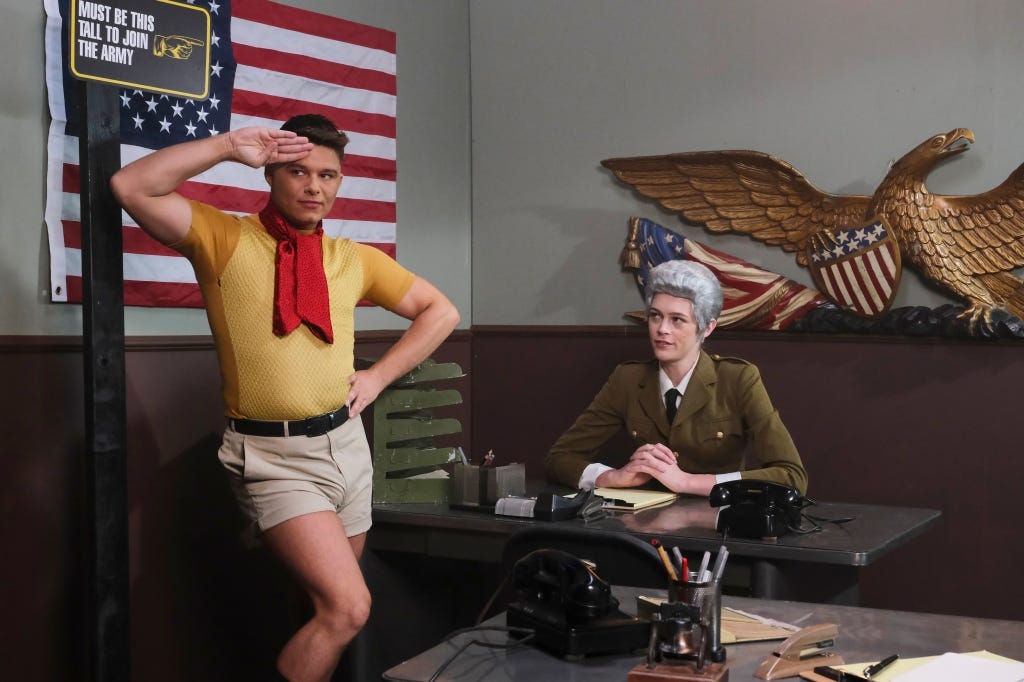Weekly Roundup- April 28th
ARCE 2022 conference update and a well-preserved Sumerian boat (!!), amongst much, much more!
ARCE 2022 Annual Conference Update!
This past weekend Kara, Jordan and Amber (along with the other UCLA Egyptologists) made the trek to Irvine, CA for ARCE’s Annual Conference. This is the first in-person conference since the pandemic struck. It was great to see all of our colleagues, listen to talks a-plenty on the latest research and archaeological field reports, and celebrate (cheers!) everyone’s achievements. UCLA’s own Nicholas Brown won 2nd in the Best Student Paper contest. Yay Nick! Kara also presented on the evidence for reuse on the coffin of Thutmose III from the Deir el-Bahri cache. What were our favorite talks you might be wondering? Or the joys and struggles of conference networking? See our thoughts below:
Kara:
My gods, but to see hundreds of people whom I haven’t seen in three years was more than overwhelming. It was madness, joyful, terrifying, all the things. So many friends to talk to, my voice was gone by the first day. The bar was my home away from my hotel room, and I spent only about 6 hours asleep every night. Lots of catching up, gossip, and everyone was nice… surprisingly nice to someone who had just written a book saying that the field of Egyptology spends too much time on positivist celebration of authoritarianism. Indeed, at least ten people pulled me aside to whisper they really liked the book, so….. 😮 And many are podcast listeners too! So that was great. Jordan and I even started to make a few invites for future episodes.
My fave talk (besides all my students and former students, of course!) was by UC Berkeley PhD student Jason Silvestri. He is working on an extraordinary west Theban papyrus in hieratic Egyptian hand, written phonetically to represent the language of the Libyans. Not only is he reconstructing ancient Libyan language out of the text, but it is a spell against snakes. Fun research all around. The papyri in question are in the Museo Egizio, Turin, but since Jason has been learning Berber for some time in addition to Egyptian, he’s the guy to do this. I can’t wait to learn more…
Jordan:
To be honest, I was a bit anxious about attending the conference. It had been so long since I’ve been to a large in-person event and the social anxiety was real! But as soon as I arrived and saw friends and colleagues, the fun began! Archaeologists are known to be partiers and we did not disappoint. ARCE is always great chance to reconnect with other Egyptology departments and meet new colleagues. Given that the Egyptological community is so small, the pressure of networking is lessened since you always know someone who can introduce you that *famous* Egyptologist.
My favorite talk that I attended would have to be Sameh Iskander’s report on excavations at Ramses II’s temple at Abydos. The team had an extra long excavation season and made amazing progress- finding both thousands of ram’s skulls and evidence for a possible Old Kingdom town wall. Dr. Iskander is also a great presenter- so always a fun lecture!
Amber:
I had a wonderful time at ARCE connecting with friends old and new. There were several notable talks this year, but one that I found particularly interesting was Jennifer Miyuki Babcock’s “The Great Cat-Hare of Re.” The vignette of the Great Cat of Re slaying Apophis is well-known from tombs at Deir el Medina and Spell 17 of the Book of the Dead, but Babcock notes that Inerkhau’s tomb (TT359) stands out in that the artist depicts the Great Cat of Re as a composite of a feline and a cape hare. Was this artistic license by one artist, or should we understand it as a visual conception of the divine that could possibly deepen our understanding of how such images functioned religiously? This paper touches on a theme I’ve often seen in art and iconography across the ancient Mediterranean and ancient Near East, which is a practical, functional ambiguity in divine imagery that allowed for a powerful religious versatility that was at once practical and divinely supercharged. Cool stuff!
If you would like to attend the conference virtually from May 6-8, Register here!
Archaeologists unearth ancient Sumerian riverboat in Iraq
How did ancient Sumerians get around? An amazingly well-preserved boat was uncovered in the 2018 from the ancient city of Uruk in modern-day Iraq. This 2,000 year old boat was originally composed of organic material, like reed or weeds, which has since decayed, with only the imprint left in the bitumen that was used to seal the boat together. The boat measured 7 m x 1.5 m- a relatively slender boat suited to sailing the river and canals.
The removal of the boat was recently deemed necessary for its protection. The boat has since been taken to the Iraq Museum in Baghdad for conservation and display. Boats such as these normally would never be found in the archaeological record, so its great to be able to add to our understanding of more local movement technologies, like smaller watercraft.
Untangling Race from Hair
Hair like skin is one physical trait that is highly racialized in Western societies with majority white populations and Eurocentric beauty standards. This article breaks all that down and looks at the foundations of the racialization of hair types. We even see this within Egyptology with certain hair styles labeled by ethnicity, like the “Nubian wig,” for example.

Trove of embalming tools unearthed in ancient Egyptian burial pit
Amazing cache of embalming materials dating to the Late Period from north Saqqara. These types of caches contain the materials that were used during the embalming process- like vessels containing natron, linen, canopic jars, and other utensils. This particular cache contained over 370 large vessels! Caches like this help us understand the embalming process and how it changed over time.

Using Podcasts to Broaden the Reach of Smaller Museums
Kara’s interview recognized in recent NYT articles about the role of podcast in broadening the reach of smaller museums:
In a recent episode, “Awkward Questions for Kara Cooney,” Jeannie Kenmotsu, the Arlene and Harold Schnitzer Curator of Asian Art, led a discussion about the traveling “Queen Nefertari’s Egypt” exhibition. In October, Ms. Cooney, a professor of Egyptian art and architecture at U.C.L.A., gave the virtual museum talk “When Women Ruled the World.”
Ms. Kenmotsu began the episode by acknowledging that the talk and the exhibition, which began at the Museo Egizio in Turin, Italy, and is now on view at the New Orleans Museum of Art, provoked questions in the community around ethics, race, power, the role of museums and “grave goods.”
If you aren’t already a follower- Kara and Jordan have a podcast, Afterlives with Kara Cooney, where they discuss topics relevant to ancient Egypt and today.
‘The Book of Queer’ to Premiere on Discovery+ in June
A new series is coming in June to Discovery+ focused of the history of Queer individuals, like Sappho, Alexander the Great, Akhenaten (!?), and many, many others. Kara and other UCLA colleagues have been involved in this show and it will be a must watch!
Greenland’s Hand-Sized Wooden Maps Were Used for Storytelling, Not Navigation

An incredible narrative about how the indigenous peoples of Greenland conceptualized space. A Danish explorer commissioned a series of maps from the indigenous people (example above), of which he was initially skeptical of due to their 3-dimensional nature. Complicating matters future, there is no ethnographic or historical evidence for wooden maps being used by the Inuit peoples- so what are these carvings and how do they function?!
A wooden relief map, would have functioned as a storytelling device, like a drawing in the sand or snow, that could be discarded after the story was told. As geographer Robert Rundstum has noted, in Inuit tradition, the act of making a map was frequently much more important than the finished map itself. The real map always exists in one’s head. Though the maps themselves are unique, the sentiments and view of the world they represent were universal to the culture that made them.









